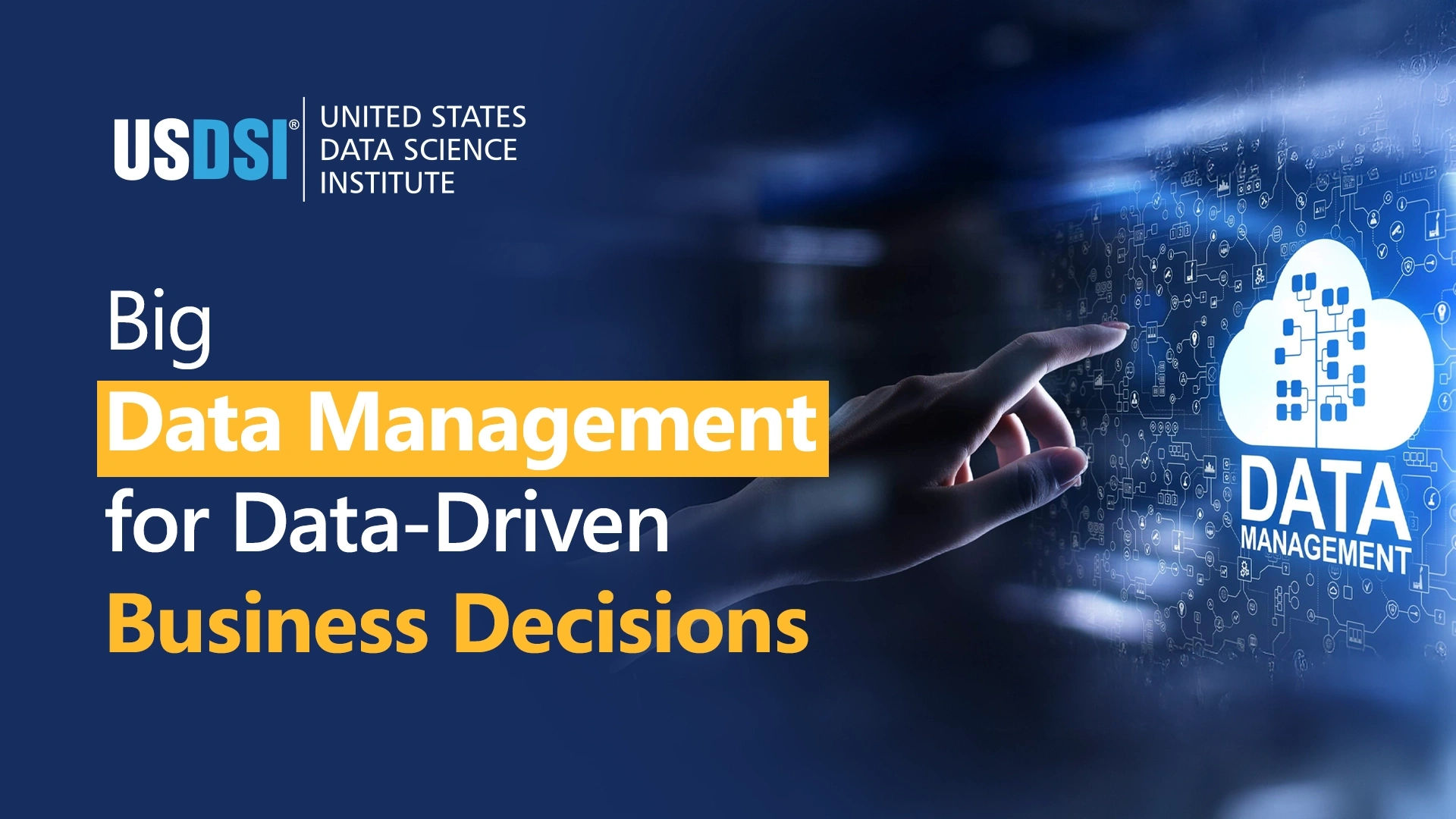
Driving massively data-informed decisions is the grounding reality for thriving business growth. The significance of big data in business strategy stems from its potential to provide insights that were previously inaccessible. As the career opportunities in data science grow at a staggering rate; it becomes an imperative to understand what skills you bring to the table to foster this growth. It is a proven fact as more and more businesses strive to incorporate data-driven decisions into their daily procedures. It has fastened their overall business growth while building big reputation among consumers.

Are you game for the evolution of data science ahead of this prediction by Forbes? This is the time to unravel big data management strategies and massively deploy data-guided business decisions for proctored growth.
There are certain characteristics that shall define the new data-driven enterprises. Those companies triggered to make the most progress fastest stand to capture the highest value from data-supported capabilities. Let us see what is expected of an organization to drive data-led business growth.
Getting started shall take into consideration the outcome of an in-depth analysis of current data strategies and build a robust platform with big data analytics; to propagate data-driven decisions. By the way, are you aware that;

This shall drive massive scale emancipation in the way data delivery and data-driven decisions are performed. This act is surely going to drive major ramp ups in the predictive analytics market taking place across organizations. Advancements in technology, such as machine learning and artificial intelligence; have significantly enhanced the capabilities of predictive analytics.
Deloitte highlights the growing importance of these solutions in the competitive landscape; with 83% of enterprises affirming that predictive analytics will be crucial for securing a competitive edge. Let us understand data-driven decision-making in detail.
Data-Driven Decision Making
A study by Harvard Business Review found that data-driven companies are more profitable and innovative than their peers. Organizations effectively leveraging big data and AI reported outperforming their peers in key business metrics including operational efficiency, revenue growth, and customer experience. Then what is data-driven decision-making?
Data-driven decision-making (DDDM) is an approach that emphasizes using data and analysis instead of intuition to inform business decisions. It involves optimizing and leveraging data sources such as customer feedback, market trends, and financial data to guide the decision-making process. DDDM allows businesses to generate real-time insights and predictions, optimize performance, and test new strategies.
What is Big Data?
Big data is the massive complex datasets that traditional data management systems cannot handle. Businesses collect large amounts of data, often measured in terabytes or petabytes, on everything possible under the sun. Data science and more specifically, big data analysis help organizations make sense of big data’s large and diverse datasets. It uses advanced tools such as machine learning to uncover patterns, extract insights, and predict outcomes.

Balancing the five V’s of big data is all about maintaining harmony between the volume of data, types of data, speed of data generation, degree of data trust, and business value of the data collected. It is imperative to make sense of data at every stage of its management.
Big Data Management
Big data management, as the name suggests, is about systematically collecting, processing, and analyzing data that organizations use; to facilitate transformation of raw data into actionable insights. Four wide components that surround credible big data management involves- data collection, data storage, data processing, and data analysis.
Big Data Management in Action for Data-Driven Decisions
Smart workflows and seamless interactions among humans and machines will likely be as standard as the corporate balance sheet, and most employees will use data to optimize nearly every aspect of their work.
McKinsey & Company brings forth a massively interesting pathway to incorporate big data management into deducing powerful decision-making based on data. To make the process seamless, these steps could come in handy to get started:
A burgeoning data pool necessitates the need to elevate the importance of data security and building robust cloud-based data resilience plan with storage tools to demarcate your commitment toward greater data-driven decisions in business. Building a future-forward big data management strategy may look like an overwhelming task, yet it pins down a major aspect of yielding big business gains and pocketing long-term success with informed decisions. So, why not start now?
This website uses cookies to enhance website functionalities and improve your online experience. By clicking Accept or continue browsing this website, you agree to our use of cookies as outlined in our privacy policy.